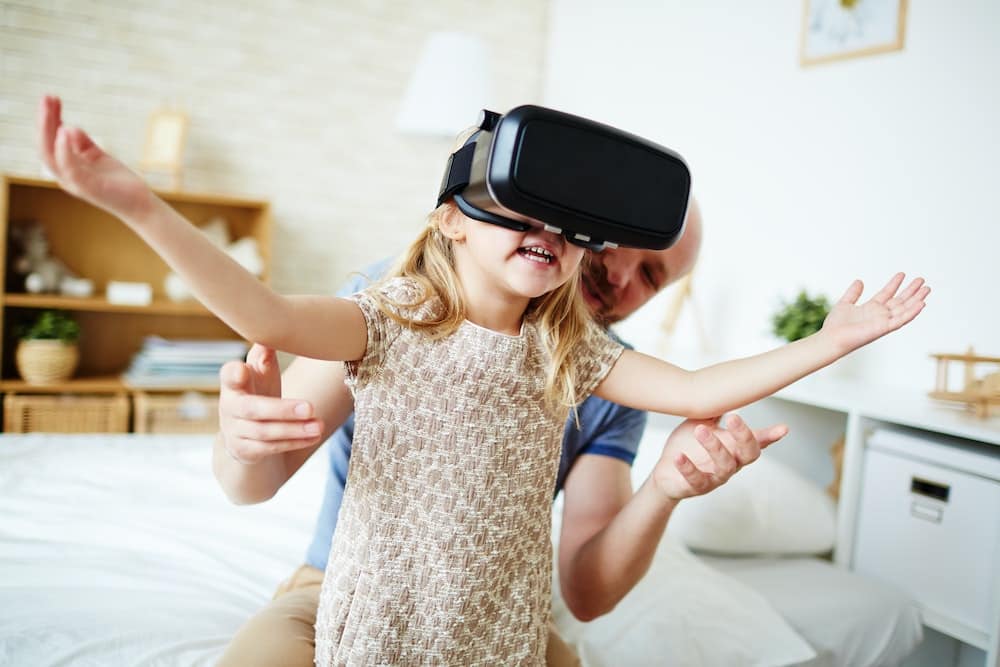How Can Virtual Reality Interventions Improve Social Skills in Autism Spectrum Disorders?

The world of technology has opened up a myriad of opportunities for education and learning. Modern advancements have especially created significant breakthroughs in supporting children diagnosed with Autism Spectrum Disorders (ASD). One prime example of technology’s promising potential is the use of Virtual Reality (VR) as an intervention tool. Let’s delve into the intricacies of how VR helps improve social skills among individuals with ASD.
Virtual Reality: A New Horizon in Autism Education
The notion of using VR for ASD intervention is not as foreign as it may sound. In fact, its application in education has been gaining momentum over the years. Its potential lies in its ability to provide an immersive and interactive environment that can be tailored to the specific needs and learning styles of individuals with ASD.
Cela peut vous intéresser : What Strategies Enhance the Success of Quitting Vaping Among Adolescents?
By creating a controlled environment, individuals with ASD can practice and learn a variety of social skills and other cognitive abilities at their own pace. VR offers a safe space where they can freely experiment with different social situations, observe their own behavior, and learn from their mistakes without the pressure of real-world consequences or expectations.
The Role of Virtual Reality Training in Enhancing Social Interaction
Communication difficulties and social interaction challenges are common among individuals with ASD. This is where VR technology plays a crucial role. With VR, individuals can engage in virtual training modules that help them practice social interactions, interpret facial expressions, and understand body language.
A découvrir également : How Can Mindfulness-Based Eating Awareness Training (MB-EAT) Aid in Weight Loss?
According to a recent scholar journal, VR-based interventions can significantly improve the ability to recognize emotions, take turns in conversations, and initiate interactions. The repeated exposure and practice in a controlled environment are key to helping children with ASD gain confidence in their abilities to navigate social situations.
Moreover, VR can also provide personalized feedback and support to individuals, allowing them to identify their strengths and areas for improvement. The constant support and reinforcement can motivate them to keep practicing, thereby enhancing their social skills over time.
Using VR to Develop Cognitive Skills in Autism Spectrum Disorders
Beyond social skills, VR also proves beneficial in enhancing cognitive skills in children with ASD. Cognitive skills are critical for understanding the world around us and learning new information. In the context of ASD, these skills can be at varying levels, and virtual reality interventions can be tailored to meet these individual cognitive needs.
For instance, VR can help children understand cause-and-effect relationships, improve their problem-solving abilities, and enhance their attention span. The interactive nature of VR makes learning these skills more engaging and enjoyable for the individual. This promotes a higher level of engagement and motivation, which are key to successful learning.
Incorporating VR in ASD Intervention: The Role of Teachers and Parents
The success of VR interventions largely depends on how well they are integrated into the education system and how effectively they are used by teachers and parents. Teachers play a crucial role in selecting appropriate VR content, setting realistic goals, and providing feedback to the children.
On the other hand, parents can use VR at home to reinforce the skills learned at school and to provide additional support. In fact, a significant advantage of VR is that it can be used anywhere and at any time, allowing for consistent learning experiences.
While the incorporation of VR in Autism interventions seems promising, it is still a relatively new concept. Therefore, ongoing research is critical to understand its potential benefits and limitations fully.
The Future of Virtual Reality Interventions for Autism Spectrum Disorders
Looking forward, the future of VR interventions for ASD seems promising. As technology continues to evolve, we can expect VR to become more immersive, interactive, and personalized. This can open up new possibilities for intervention strategies and provide a more comprehensive support system for children with ASD.
However, it’s crucial to remember that technology alone cannot replace the importance of human interaction and personal support. It is merely a tool that can supplement traditional interventions and provide additional opportunities for learning and growth.
As advancements continue to be made, the hope is that VR interventions will become a standard part of ASD treatment and education, helping children to thrive and achieve their full potential. With the right support and resources, individuals with ASD can lead fulfilling and socially rich lives. Despite the challenges of autism, the use of innovative technologies such as VR provides a beacon of hope and a testament to human adaptability and resilience.
Boosting Confidence with VR: Overcoming Social Anxiety in Autism Spectrum Disorders
Individuals with ASD often experience social anxiety due to difficulties in interpreting social cues and adapting their behavior to social norms. This can limit their ability to form meaningful relationships and participate in social activities. However, Virtual Reality can help alleviate these issues by providing a safe and controlled environment where users can practice social interaction without fear of judgment or misunderstanding.
Several studies, documented in international journals and Google Scholar, attest to the effectiveness of VR in helping children with autism overcome their social fears. These studies show that VR can simulate a variety of real-life social scenarios. These scenarios range from simple conversations to more complex interactions like attending a party or giving a presentation. The beauty of VR is that it allows individuals with ASD to experiment with different responses and receive immediate feedback on their performance. Over time, this can significantly reduce their anxiety levels and boost their confidence in their social abilities.
Moreover, VR provides a user experience that is highly engaging and immersive. This can make the process of learning and practicing social skills more enjoyable for individuals with ASD. In fact, research published in the Journal of Autism and Developmental Disorders shows that VR interventions can lead to increased motivation and engagement in social interaction tasks. This level of enjoyment can significantly enhance the effectiveness of these interventions and lead to long-term improvements in social skills.
The Growing Accessibility of VR: A Game Changer for Autism Spectrum Disorders
The proliferation of VR technology in recent years has made it more accessible and affordable than ever before. With the growing ubiquity of VR headsets and compatible devices, the use of VR as an intervention tool for ASD has become feasible for a larger number of individuals and institutions.
Today, many specialized educational institutions and therapy centers for autism are incorporating VR into their programs and seeing promising results. In addition, a number of tech companies are creating VR applications specifically designed to improve social skills in children with ASD. These include simulation games that recreate common social scenarios, interactive exercises that teach body language and facial expression recognition, and other innovative applications that are continuously evolving to meet the needs of the ASD community.
The increasing accessibility of VR also means that parents and caregivers of children with ASD can use this technology at home. As a separate window to learning outside of the formal educational environment, VR can reinforce the social skills learned in school and provide additional practice opportunities. This can lead to more consistent learning experiences and better outcomes in the long term.
Conclusion: VR as a Valuable Tool in the Toolkit for Autism Spectrum Disorders
The advent of Virtual Reality has introduced a new dimension to the field of intervention strategies for Autism Spectrum Disorders. Its ability to provide a controlled, immersive and interactive environment is a valuable tool for teaching and reinforcing social skills, overcoming social anxiety, and improving cognitive abilities in individuals with ASD.
While the potential of VR is promising, it is crucial to remember that it should not replace traditional methods of intervention. Instead, it should be used in conjunction with other techniques to provide a comprehensive and individualized approach to autism education and intervention.
Just as every individual with ASD has unique needs and abilities, the use of VR should be tailored to meet these individual characteristics. Research is ongoing to fully understand the scope and limitations of VR, and to develop effective strategies for integrating VR into ASD interventions.
In the future, it is envisioned that VR will become a standard tool in ASD intervention, complementing other educational and therapeutic strategies to provide individuals with ASD with the skills and confidence they need to thrive. Given its potential, the continued exploration and development of VR for ASD is not just an exciting prospect, but a necessary one. After all, in the face of autism challenges, every tool counts. And VR, undoubtedly, is a powerful one.
